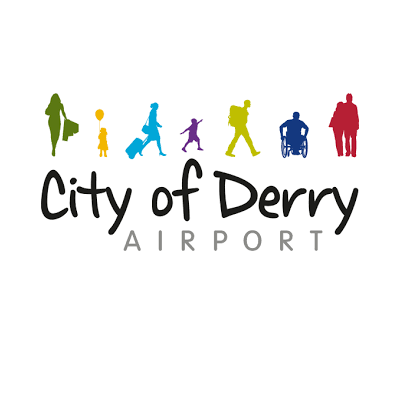It goes without saying that mobile is now absolutely integrated into everyday life. You just have to look around you to see how many people are on their phones. But this change has come quickly, and businesses have had to adapt at an unprecedented rate. In 2016, mobile visits to retail sites overtook desktop for the first time. Given that in 2010 mobile accounted for less than 3% of traffic to ecommerce sites, this represents a monumental shift.
Think of it this way: More than half of all ecommerce traffic now comes from mobile. While mobile devices have dominated the market since late 2013, now those people who are accessing the Internet using tablets and smartphones are doing so with more intent to buy than ever before. The stats are clear: In the major European countries, mobile holds more than a 60% share of total minutes spent online, passing 90% in Indonesia.
And as airports catch up with retail, incorporating big data to personalise and improve passenger experience, building a relationship with the customer in the airport and taking advantage of mobile functionality to streamline efficiency, passenger expectations have jumped.
In October 2016, IATA’s General Passenger Survey of nearly 7,000 passengers from more than 145 countries, found that travellers were looking for a different experience, enriched by interaction and choice.
Three years further down the line, passengers now expect to arrive at the airport ready to fly, to be able to pass through security and border control without having to remove personal items, to have the same connectivity in the air as on the ground, and to be able to tailor their travel options – a function for which they are prepared to surrender personal data.
At the same time, statistics show that 40% of users will go to a competitor after a bad mobile experience, yet 84% have experienced difficulty completing a mobile transaction. This is an incredibly high number of dissatisfied customers, indicating that there is still huge potential for businesses to capitalise on consumer conversion simply by creating mobile responsive websites and user-friendly apps. In fact, digital solutions that provide travellers with a quicker, easier and more pleasant experience in the airport have been shown to generate brand trust and engagement, and to provide data helpful to operational efficiency and monitoring KPIs, which all subsequently leads to an increase in revenue.
Even way back in 2014, a survey from FlightView found that as many as 53% of U.S. travellers were happy for airports to track their mobile devices in order that they could receive real-time updates on departures, security lines, wait times at Customs and ticket counters and walking times between gates. Now it’s standard practice for passengers to rely on apps, location trackers and real-time digital information, even before they leave home.
While focus remains on establishing the many ways in which mobile technology can improve efficiency within the airport, a large part of this is in matching or exceeding the expectations of today’s mobile-using traveller.
The rise of the App
Many airports and partners have sophisticated apps for travellers. While early apps allowed the airport to track passenger movement, capture data and pass important information to passengers, app functions have seen a creative revolution.
Travellers can now order food to their departure gate, book lounge time, and even ask Alexa for flight updates, a feature of London Heathrow’s smartphone app. Apps can be used for wayfinding too, as exemplified by Gatwick Airport’s award-winning AR app which uses intuitive maps and 2000 navigation beacons to guide passengers through the terminal.
While customers have in the past favoured browsers and websites over apps, in 2019 the Apple App Store reached its 11th ‘birthday’. Today’s apps are now much better built and more integrated, as indicated by the 194 billion app downloads in 2018, up from 178 billion in 2017.
Bear in mind too, that social media apps are a powerful marketing platform and that messaging apps can be incredibly valuable when it comes to customer support (Whatsapp (over 900 million downloads) and Facebook Messenger were the two most downloaded apps worldwide in 2018).
The value challenge
App retention levelled out in recent years at around 38% but has dropped to 32% in 2019. Look back to 2016, when figures showed that 23% of customers abandoned an app after only one use, it is clear that users expect quality and will quickly dismiss an app that fails to deliver. Your app must have slick, relevant functionality that justifies the storage space and that keeps the user coming back.
Retailers have invested heavily in mobile optimisation, encouraging customers to shop using mobile with the development of user-friendly apps. Mobile is now accepted and trusted in so many roles; as a navigation device on the road, as a paper-free event ticket; even back in 2014, the smart phone’s original function, (making phone calls) didn’t make the top five in a survey of common uses.
Independent apps such as Mobile Passport, authorised by US Customs to allow travellers to skip border control lines, My TSA, which gives practical tips about packing and ID requirements, and various restaurant and parking guru apps have been available for several years. Passengers are now accustomed to enhancing their airport experience via mobile.
This offers a huge move away from the original passive airport app, which saw a slow uptake of mobile check-in as recently as 2015. It underlines a golden opportunity for airports to bring customers on board with their own apps, enhancing passenger experience and increasing ancillary revenue.
The absolute key is usability. Around 95% of all apps are never used, with bad user experience sited as a common reason that drives customers to use a competing app instead. Today’s app should be interactive, integrating every thing that creates the airport experience. The very best airport apps make a huge amount of airport data available to their passengers in ways that really smooth the whole journey.
Here’s how it’s done…
Be up-to-date
Make sure your mobile app is available and functional across all operating systems including iOS and Android.
Dublin and Cork Airports in Ireland originally produced an app that was not Android-compatible. Despite 70,000 passengers passing through the two airports every day, app use fell because the app was not maintained – recent investment in passenger relations via the app has seen massive improvements in customer interaction.
Be local
Offer passengers personalised updates, directions and tips based on their location, destination and needs.
Be accurate
Updates on gate, flight and baggage collection times must be accurate and in sync with data on airport passenger screens and websites. It is important that data is seen to be trustworthy or people will not use the app. Include notification functions so passengers can be alerted to updates.
Be informative
Provide accurate indoor maps with walk-times and blue-dot function. At Sydney Airport, passengers benefit from maps giving a comprehensive view of facilities including terminals, gates and retailers.
Be helpful
Consider geo-tagging. Dublin and Cork airports allow passengers to photograph and tag their car when they park, so they can find it easily on the way home.
Be retail savvy
Improve ancillary revenue and duty-free shopping experience with a click-and-collect service, or encourage customer spend by sending enticing offers with parking and fastrack tickets.
Integrate ancillaries
Include extras such as parking and flight tickets so that the customer is interacting with the app long before arriving at the airport. This in turn provides customer data that can be filtered by a CRM system to offer relevant upselling and cross-selling offers designed to enhance passenger experience once at the airport. Integrated solutions like those offered by Rezcomm provide a seamless user experience and valuable opportunities to enhance customer relations.
Design your app for the user
Make sure details of products such as seat assignment are clear. Customers are put off by many apps where:
- Prices are not displayed until the seat is selected
- The selection of seats on a flight is limited because most are reserved for elite members
- Once selected, the fee no longer appears as a separate item and is merely bundled into the overall purchase price
- The selling features of a seat are not immediately obvious or confusing labels are applied. For example, one US airline brands a particular seat “Core” which is undefined and not intuitive
Don’t ignore the baggage
Checked baggage presents one of the largest opportunities to boost revenue and improve customer experience.
Remember: Baggage is a crucial part of a passenger’s journey on an airline, yet it’s too frequently treated as an afterthought by airlines. Too often the customer is merely directed to a very broad display of information, rather than to prices tailored for the flight they have already chosen, and this display often then leads to a generic, non-responsive (not mobile friendly) website page.
If the consumer has abundant time and exceptional eyesight, they may be able navigate the maze of detail to find the policy for their particular trip…
So make sure baggage information and options are easily accessible via your mobile app!
Simplify and Enhance the Experience
The real goal is to provide a way in which passengers can use their mobile for all sorts of functions throughout their journey, with seamless usability whether they are using iOS, Android, a phone, tablet, watch or other device. Functions can range from finding out what to have for breakfast to what to do if a connection is missed.
A reminder about the responsibility of data management
The importance of correct data storage and privacy was flagged up loud and clear in 2018 when the new GDPR came into effect, and is very relevant to any aspect of your digital strategy.
The aim of the GDPR is to give individuals back control of their personal data and to simplify the regulatory environment for international business by unifying the regulation within the EU. Personal data is any information relating to an individual that would make it possible to identify that person. It can be anything from a name, a home address, a photo, an email address, bank details, posts on social networking websites, medical information, or a computer’s IP address.
The regulation applies if the data controller (business that collects the data from the EU residents) or processor (business that processes the data on behalf of the data controller e.g. Cloud service providers) or the individual is based in the EU. The Regulation also applies to organisations based outside the EU if they collect or process personal data of EU residents.
With any digital strategy it is vital to comply with data regulations. Not only does this protect the traveller, it also increases trust, encouraging passengers to share their data. By partnering with an industry expert like Rezcomm you can be confident that the customer data you hold in order to provide excellent service will be securely stored.
Rezcomm is the technology partner of choice for airports worldwide. Contact us for a chat to find out how our in-depth industry knowledge and world-first integrated airport ecommerce platform will give you the tools to build a strong mobile strategy, engage your customers, offer a world class passenger experience and build revenue.






























